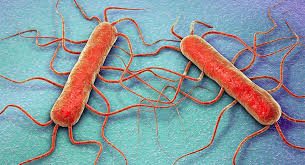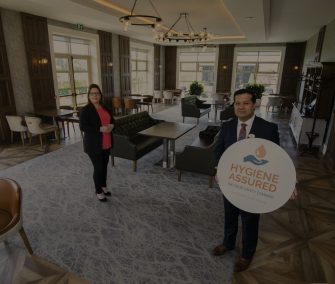The Stigma Surrounding the bacteria Listeria Monocytogenes
The Stigma Surrounding Listeria
The presence of Listeria, particularly Listeria Monocytogenes is a grave concern for many food business operators, particularly those manufacturing or processing raw foods such as milk and cheeses as well as ready to eat foods due the resistant capacity Listeria has of forming biofilms as well as its ability to multiply at refrigeration temperatures. Ingestion of a contaminated product can cause a spectrum of debilitating symptoms, from nausea and diarrhoea to septicaemia and even death, ranking it the 3rd highest fatality foodborne pathogen. Groups most at risk of developing serious complications as a result of ingesting a contaminated food product include the elderly, the young, pregnant women (Listeria can cross the placenta and reach the foetuses brain which has a 30% mortality rate) and those who are immunocompromised. Therefore effective listeria control via implementation of a vigorous cleaning programme is and should be a major priority for food businesses involved with high risk foods as recalls can lead to large economic losses.
Sampling must be carried about every 2 months, 6 environmental and 2 food swabs which are then sent for analysis, requiring a minimum of 5 days to conclude if Listeria is detected or not. Teagasc have been involved in a Listeria monitoring programme which involves analysing the trends of approx. 61 businesses gathered over the past 2 years, and contact the food business directly if trends show a significant increase/decrease compared to previous results in order to find out the root cause. General prevalence’s are in agreement with the EU average however, with food samples being higher than environmental samples.
Having said that, not all Listeria is pathogenic i.e. disease causing, but since there hasn’t been an approved test to differentiate between pathogenic and non pathogenic strains its presence is assumed as pathogenic. The areas of production most associated with providing ideal conditions for growth of Listeria and are therefore most frequently tested include the wash room, drains, processing room, tables, vat and trolleys. The main sources of contamination would be through the environment as well as insufficient cleaning regimes due to harbourage site or ineffective disinfectants/sanitizers. A point was brought up that if a food business is building an extension or is under construction for any length of time, it is imperative to create a physical barrier from the productions site, as well as ensuring all personnel involved are aware of the strict hygiene SOP’s the production site has in place.
The take home message is that even if effective control measures are established to minimize the presence of Listeria, it will not prevent its presence but rather reduce the risk of a product becoming highly contaminated, thus reducing the risk of people becoming sick. Most businesses think the aim of swabbing is not to find Listeria, whereas it is actually more beneficial to find it so precaution measures can be put into place to ensure that L. monocytogenes does not exceed 100 cfu/g in products placed on the market during their shelf-life, as required by Commission Regulation 2073/2005.
For further information email info@marydaly.ie or telephone us on (021) 4355917


